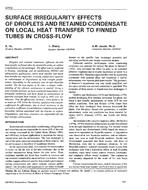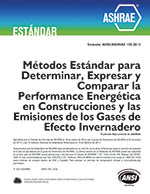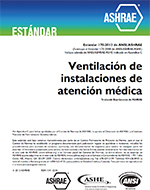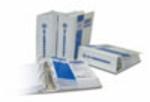Description
Droplets and retained condensate influence air-side heat transfer to finned tubes by essentially acting as surface irregularities on the exchanger. The effect may be profound in heating, ventilating, and air conditioning (HVAC) and refrigeration applications, where both sensible and latent heat transfer are important. Previous studies have reported an enhancement or degradation of heat transfer performance, depending on the geometry and air-side Reynolds number. For the true impact to be clear, a deeper understanding of the relevant mechanisms is needed. Using a mass transfer analogy, experiments with simulated condensate were conducted and have found an enhancement in spatially averaged heat transfer as high as 33% over dry behaviour. True fin efficiencies, however, were found to be as much as 13% below the Gardner (uniform heat transfer coefficient) fin efficiencies, due to local variations in the convection coefficient. Local behaviour is dominated by small horseshoe vortices associated with the droplets or surface irregularities, and these structures are responsible for the heat transfer enhancement.
KEYWORDS: surfaces, condensation, heat flow, finned tubes, heat exchangers, performance, geometry, Reynolds numbers, experiment, wet, dry, efficiency, heat transfer coefficient, fins
Citation: ASHRAE Trans. 1994, Vol.100, Part 1, Paper number 3773, 375-381, 5 figs., 3 tabs., refs.
Product Details
- Published:
- 1994
- File Size:
- 1 file , 980 KB
- Product Code(s):
- D-17647




